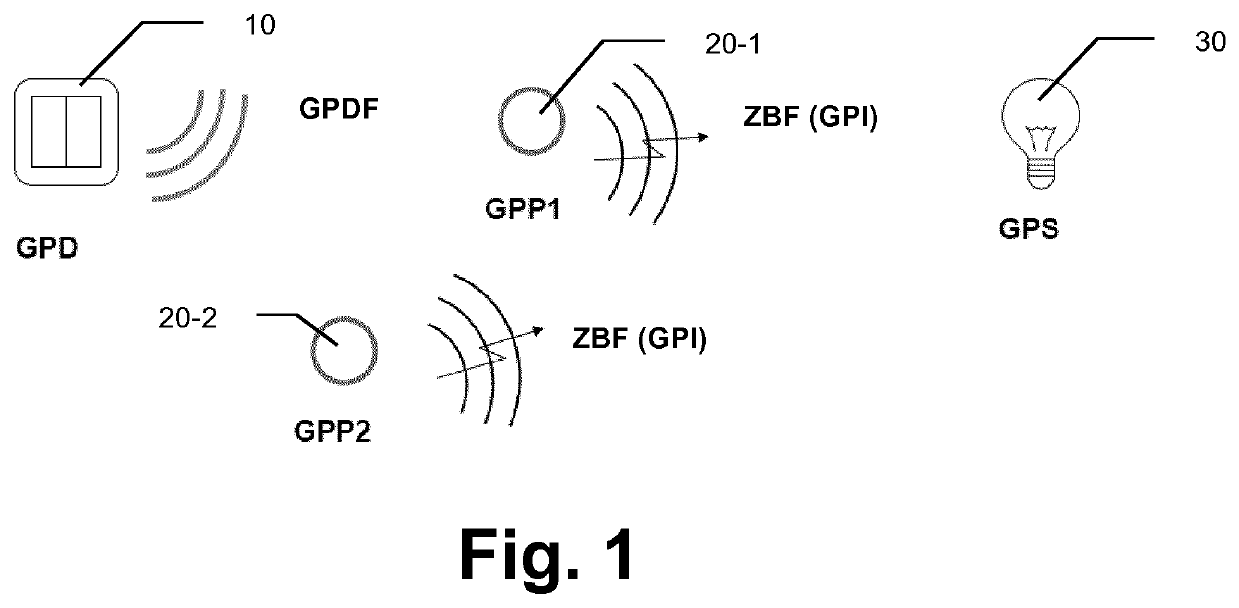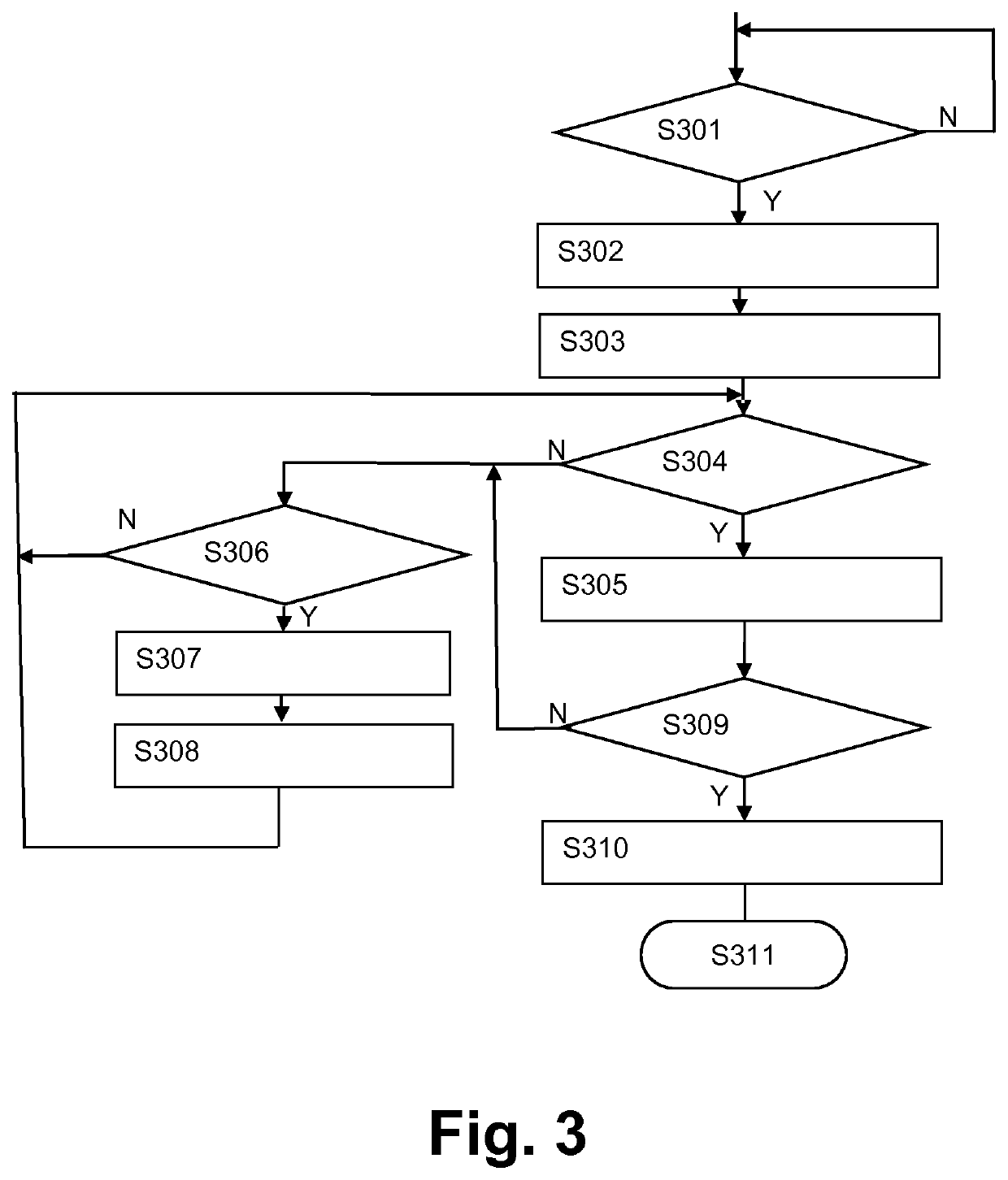Bi-directional commissioning for low-power wireless network devices
a wireless network and wireless network technology, applied in data switching networks, machine-to-machine/machine-type communication services, high-level techniques, etc., can solve problems such as affecting the stability and performance of the zigbee network, consuming very limited power energy of green power devices, and non-reliable gp communication
- Summary
- Abstract
- Description
- Claims
- Application Information
AI Technical Summary
Benefits of technology
Problems solved by technology
Method used
Image
Examples
first embodiment
[0054]FIG. 2 shows a processing and signaling diagram of a GP commissioning procedure where multiple temporary masters can be appointed during GP commissioning. The diagram of FIG. 2 is to be interpreted in a sense that the upper blocks represent network devices (i.e. GP device 10, GP proxies 20-1, 20-2 and GP sink 30) that participate in the procedure, horizontal arrows represent signaling messages, and rectangles represent processing step(s) at the network device to which the corresponding vertical dotted line leads, while time passes along the dotted lines from the upper to the lower part of the diagrams of FIG. 2.
[0055]Initially, the GP device 10 broadcasts a GP channel request on a first channel (Ch A) to the first GP proxy 20-1 and to the second GP proxy 20-2 (step S201). In response thereto, the first and second GP proxies 20-1 and 20-2 send in steps S202 and S203 respective commissioning notification messages whose payload is a channel request to the GP sink 30. If required...
second embodiment
[0070]In the following, a commissioning control procedure at a GP sink device (e.g. GP sink 30 of FIG. 1) is described with reference to a flow diagram shown in FIG. 3.
[0071]In step S301, the procedure initially waits until a commissioning process has been triggered by an external event (e.g. activation of a trigger button, receipt of a commissioning instruction etc.) and waits for a commissioning notification with channel request.
[0072]If receipt of such a notification has been determined, the procedure proceeds to step S302 and a temporary master is selected from available GP proxies e.g. based on the initially mentioned criteria. Then, in step S303, an information indicating the selected temporary master is stored and a GP response message with the temporary master information and channel configuration information is broadcast or unicast to the GP proxies.
[0073]In the next step S304, the procedure checks whether a GP commissioning notification with a GP commissioning GP data fra...
third embodiment
[0076]In the following, a commissioning control procedure at a GP proxy device (e.g. first or second GP proxies 20-1 or 20-2 of FIG. 1) is described with reference to a flow diagram shown in FIG. 4.
[0077]In an initial step S401, a commissioning notification with GP channel request is received from a GP device (e.g. GP device 10 of FIG. 1) and forwarded to a GP sink device (e.g. GP sink 30 in FIG. 1). Then, the procedure waits in step S402 until a GP response with temporary master information has been received from the GP sink. If such a response has been received, the procedure proceeds to step S403 and it is checked whether the GP proxy itself has been selected as temporary master. If not, a temporary silence mode is entered for the duration of a predetermined silence mode window in step S404. Then, the GP tunneling is stopped in step S405 and a timer operation for counting the duration of the silence mode window is started in step S406. Then, the procedure proceeds to step S410 a...
PUM
 Login to View More
Login to View More Abstract
Description
Claims
Application Information
 Login to View More
Login to View More - R&D
- Intellectual Property
- Life Sciences
- Materials
- Tech Scout
- Unparalleled Data Quality
- Higher Quality Content
- 60% Fewer Hallucinations
Browse by: Latest US Patents, China's latest patents, Technical Efficacy Thesaurus, Application Domain, Technology Topic, Popular Technical Reports.
© 2025 PatSnap. All rights reserved.Legal|Privacy policy|Modern Slavery Act Transparency Statement|Sitemap|About US| Contact US: help@patsnap.com



